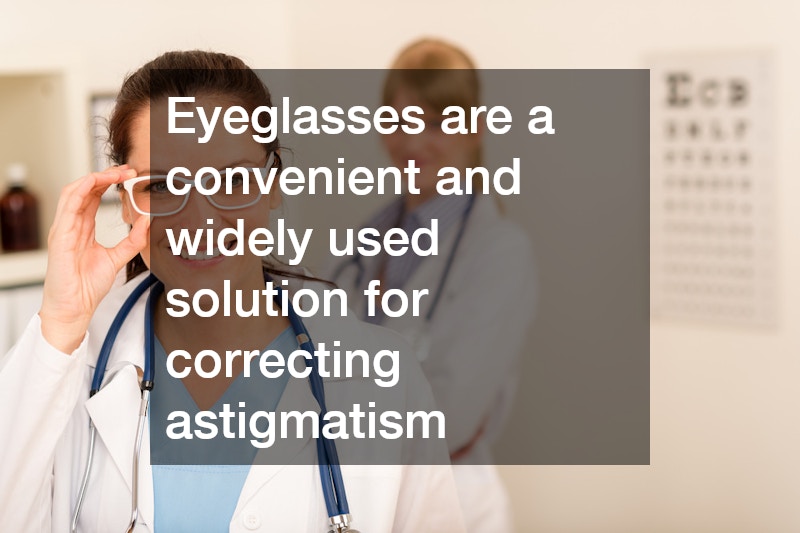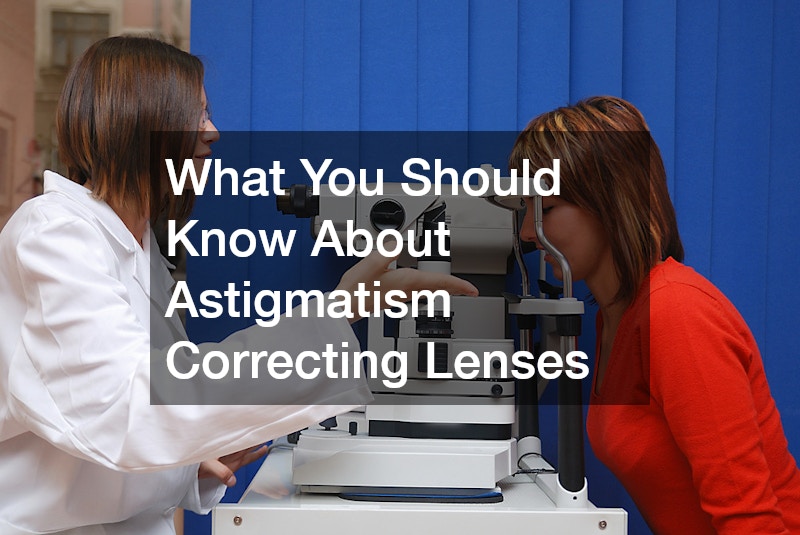
Astigmatism is one of the most common vision issues, affecting millions of people worldwide. It occurs when the cornea or lens of the eye has an irregular shape, causing light to focus unevenly on the retina. This irregularity can result in blurred or distorted vision at both near and far distances, along with eye strain, headaches, and difficulty seeing at night. Fortunately, advances in eyewear and lens technology have made correcting astigmatism easier than ever, allowing individuals to enjoy clear, comfortable vision. Understanding how astigmatism works and the available corrective options is key to maintaining healthy eyes and optimal vision.
Understanding Astigmatism
Astigmatism is a refractive error, similar to nearsightedness or farsightedness, rather than a disease. People with astigmatism usually have a cornea that is more oval-shaped than round, which causes light entering the eye to bend improperly. This creates multiple focal points rather than a single one on the retina, resulting in blurred or distorted vision. Many individuals with astigmatism experience eye strain, fatigue, frequent headaches, or difficulty seeing clearly, especially after reading or long hours in front of screens. Detecting astigmatism early through routine eye exams is crucial, as proper corrective lenses can prevent strain and preserve vision quality.
How Astigmatism Correcting Lenses Work
Astigmatism-correcting lenses, often called toric lenses in the context of contact lenses, are designed to counteract the irregular curvature of the cornea or lens. Unlike standard spherical lenses, toric lenses have different powers along different meridians, allowing light to focus precisely on the retina. Eyeglass lenses are crafted according to the exact degree and axis of astigmatism measured during an eye exam. This customization minimizes visual distortion and provides clear vision across the entire lens. For contact lenses, stabilization features keep the lens properly oriented on the eye, ensuring consistent correction throughout the day.
Eyeglasses for Astigmatism
Eyeglasses are a convenient and widely used solution for correcting astigmatism. Lenses can be designed to correct a single field of vision or combined with multifocal or progressive prescriptions for those who also need help with near vision. Modern lenses are thinner, lighter, and available in high-index materials that reduce bulk and improve comfort. Glasses are not only practical but also allow for additional coatings, such as anti-reflective, scratch-resistant, and UV protection layers, which enhance both function and durability.
Contact Lenses for Astigmatism
Toric contact lenses are specifically created for astigmatism and are available in both soft and rigid gas-permeable varieties. Soft toric lenses provide comfort and flexibility, while rigid lenses often offer sharper vision and are suitable for higher degrees of astigmatism. Proper fitting is essential for contact lenses, as improper rotation can reduce effectiveness and cause discomfort. Hybrid lenses, which combine a rigid center with a soft outer layer, are another option for individuals with irregular corneas, offering both sharp vision and comfort. Additionally, orthokeratology lenses, worn overnight, can temporarily reshape the cornea, providing clear daytime vision without glasses or contacts.
Technological Advancements in Corrective Lenses
Technology has significantly enhanced the performance of astigmatism-correcting lenses. Optical labs can now produce highly precise custom lenses that optimize clarity and reduce edge distortion. Contact lenses are designed with stabilization mechanisms to maintain orientation on the eye, and advanced materials increase oxygen flow to keep eyes healthy. Innovations in lens coatings also protect against glare, reduce blue light exposure from digital devices, and prevent scratches or smudges. These advancements make corrective lenses more effective, comfortable, and durable than ever before.
Choosing the Right Lenses
Selecting the most suitable astigmatism-correcting lenses involves considering the severity of the condition, lifestyle needs, and comfort preferences. Mild astigmatism may be managed effectively with glasses or standard soft contacts, while higher levels may require toric or rigid lenses. Individuals with active lifestyles or sports activities often benefit from contact lenses, while those who spend long hours reading or working on computers may prioritize lenses with blue light protection. Material, thickness, and coatings are also important, as they affect both vision quality and daily comfort. Consulting an eye care professional ensures lenses are tailored to individual needs and provide consistent correction over time.
Maintaining Your Lenses
Proper care of astigmatism-correcting lenses is essential to maintain clear vision and prolong lens life. Glasses should be cleaned daily with a microfiber cloth and lens-safe solution, avoiding abrasive materials that could cause scratches. Contact lenses require strict hygiene practices, including thorough handwashing before handling and regular replacement according to professional recommendations. Regular eye exams are also important, as astigmatism can change over time, and updating your prescription ensures continued optimal vision and comfort.
Astigmatism may seem complex, but modern corrective lenses make it manageable and almost imperceptible in everyday life. From eyeglasses and toric contact lenses to hybrid lenses and orthokeratology options, there are solutions to meet almost every individual’s vision needs. Understanding the condition, exploring available lens options, and maintaining proper care are essential to achieving clear, comfortable vision. Regular eye exams are the key to detecting changes early and ensuring that your lenses continue to provide the best possible correction. With the right approach, those with astigmatism can enjoy sharp vision, reduced eye strain, and a higher quality of life.

